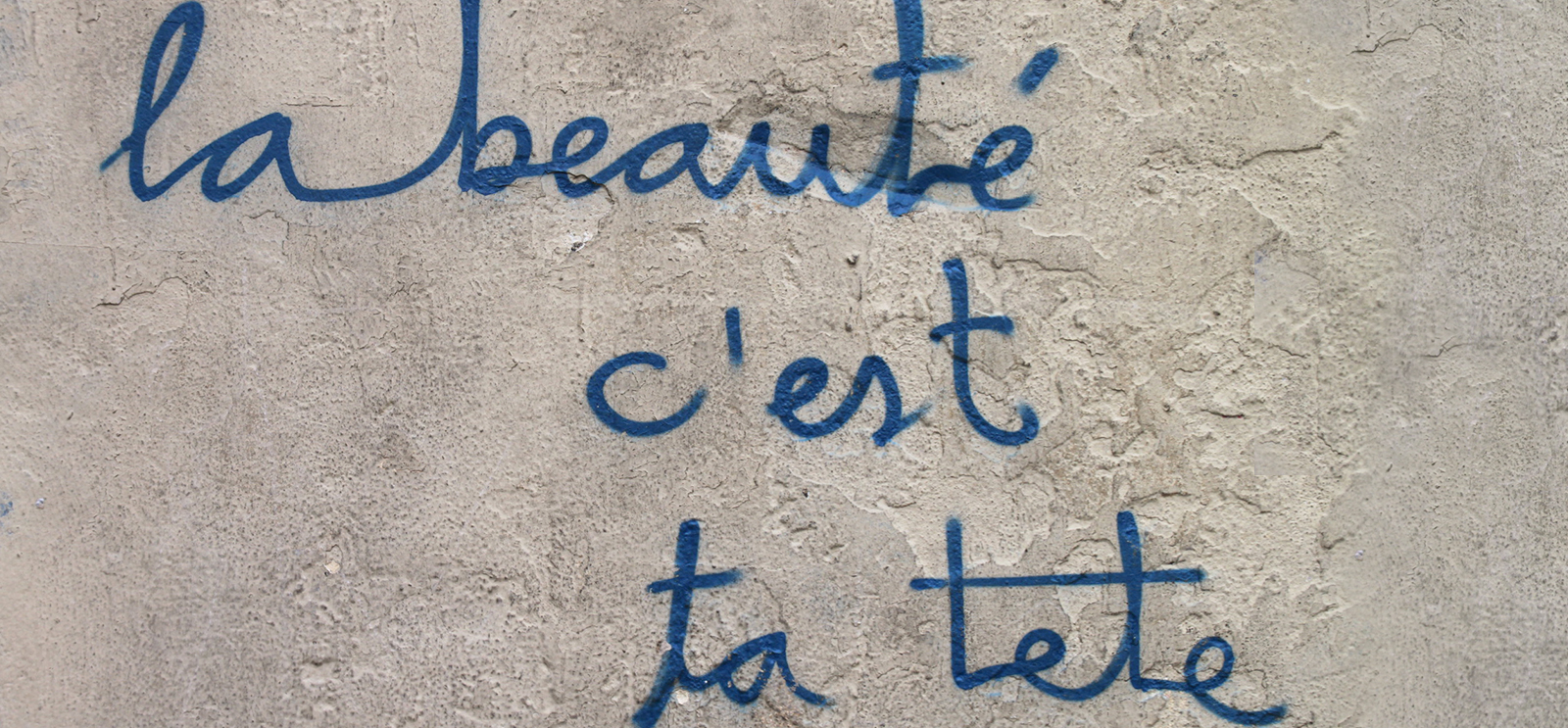
Graffiti in Marseille. (Photography by Jeanne Menjoulet, (CC BY 2.0)
This spring quarter I found myself back in Cobb Hall, more than 25 years after I graduated, sitting in on French 101. Most of the students in the class hadn’t even been born then.
It was humbling. For years I had struggled to learn French in adult education settings, where the pace is slow and no one studies between class meetings. (Tellingly, when I took UChicago’s placement exam, I tested into French 101.) Those adult classes were like a gentle jog around the block. French 101 was like training for a marathon—along with a team of professional athletes.
I was brain tired in a way I had never been before. I craved sugar and had zero patience. The experience gave me new insight into the way my kids had acted out while adjusting to full-day kindergarten.
Once my brain adapted to the strain, here are some things I learned.

Smash your words together.
When native speakers say je suis (I am), it comes out like “schwee.” Il y a (there is) is “ya.” You will be understood if you pronounce all those words separately. But if you want to understand French people, you need to learn what to listen for.
Use words that don’t actually mean anything.
You already do this in English. They’re known as filler words: well, um, OK. In French, the equivalents are bon, ben, bon ben (my personal favorite—like, well OK), alors, and allez. Also hein, used at the end of a sentence for confirmation, meaning something like eh? or huh?
Don’t switch your word order to make questions.
None of this Quelle heure est-il? (What time is it?) or Comment dit-on … ? (How do you say…?) that you may have learned. Mais, non. Try Quelle heure il est? (What time it is?) or Comment on dit … ? (How one says … ?). Raise your intonation at the end, just as in English. Voilà, a question.
Some words require physical gestures as well.
The word bof, which means roughly meh, must be accompanied by a one-shoulder shrug, or it doesn’t make any sense. Not two shoulders, just one. The shoulder you choose is up to you.
The number of cheek kisses in France varies.
Everyone knows that French people kiss each other on the cheek—but it’s complicated. The number of kisses can vary from two (in Paris) to four (in the north). And some people begin on the right, some on the left, with all the awkwardness you would expect.
Know your pastries.
What’s sold in Hyde Park as a chocolate croissant is un pain au chocolat in France. Here’s another opportunity to smash your words together: Je voudrais (I would like) is two syllables: jvou-drais.
Délicieux!
